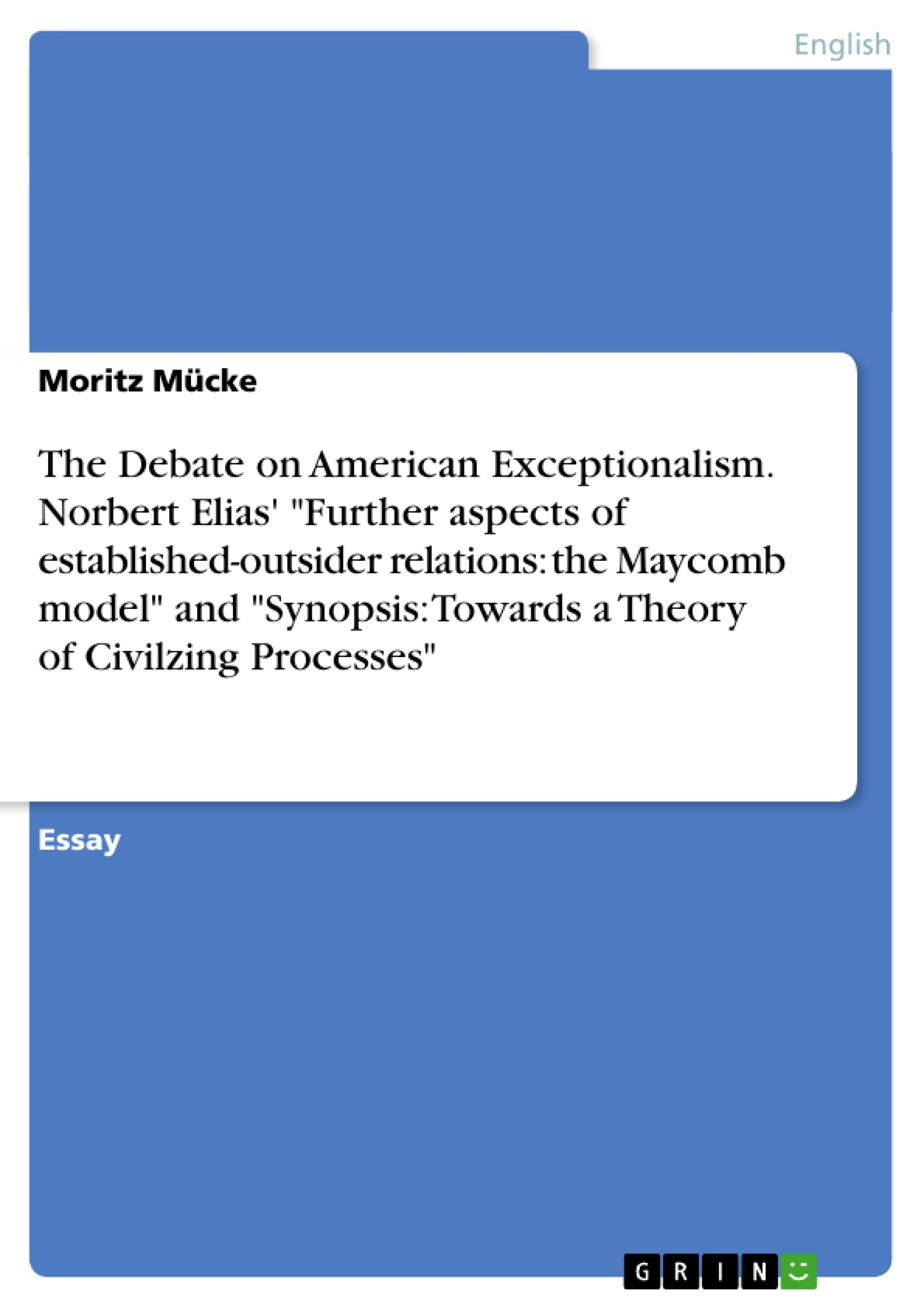The insistence that the United States of America is an exceptional country is widespread, particularly and unsurprisingly in America. Given the country's economical and social history, the suggestion that the country is indeed fundamentally different from other nations can not be easily discredited. Many factors contribute to this idea and recent political developments, most notably the impressive comeback of the Republican Party in the 2010 elections, indicate that a majority of Americans disapprove of a political approach that would move the country toward a larger size of federal government, European-style socialism and an apologetic foreign policy.
The work of the late sociologist Norbert Elias is particularly relevant when American Exceptionalism is concerned. Elias examined the historical and social evolution of nations, a development which he called the Civilizing Process. He also focused on established-outsider relations and their underlying social dynamics and the friction that arises in communities with an established group and the outcast. In the case of the United States, one can easily detect patterns that bring to mind this part of Elias's work; the discrimination of ethnic or religious groups like native Americans, African-Americans and others (“No Irish need apply”).
The aim of this paper is to evaluate Elias's theories in the context of American Exceptionalism. The question of whether the American Civilizing Process is in line with Elias's observations or constitutes a unique phenomenon within human history has to be addressed just as well as the depiction of established-outsider relations that he deals with in his essay on Harper Lee's novel “How to Kill a Mockingbird”.
Inhaltsverzeichnis (Table of Contents)
- Norbert Elias's texts "Further aspects of established-outsider relations: the Maycomb model" and "Synopsis: Towards a Theory of Civilizing Processes" as contributions to the debate on American Exceptionalism
- American Exceptionalism and Norbert Elias's Theory of the Civilizing Process
- The Maycomb Model: Established-Outsider Relations in "To Kill a Mockingbird"
- The Role of Diversity in American Exceptionalism
- The Impact of Libertarianism on the American Civilizing Process
- The Role of Religion in American Exceptionalism
Zielsetzung und Themenschwerpunkte (Objectives and Key Themes)
This paper examines the relevance of Norbert Elias's work, specifically his theories on the "Civilizing Process" and established-outsider relations, in the context of American Exceptionalism. It analyzes how Elias's concepts apply to the unique historical and social development of the United States, focusing on the "Maycomb model" derived from Harper Lee's "To Kill a Mockingbird." The paper aims to assess whether the American Civilizing Process aligns with Elias's observations or presents a distinct phenomenon.
- American Exceptionalism
- The Civilizing Process
- Established-Outsider Relations
- The Maycomb Model
- Diversity and Social Dynamics
Zusammenfassung der Kapitel (Chapter Summaries)
This section will provide summaries of the chapters in the text. The summaries will cover the main themes, arguments, or narrative elements of each chapter.
Schlüsselwörter (Keywords)
Key terms and concepts discussed in the text include American Exceptionalism, the Civilizing Process, established-outsider relations, the Maycomb model, diversity, libertarianism, and the role of religion in American society.
- Quote paper
- Moritz Mücke (Author), 2011, The Debate on American Exceptionalism. Norbert Elias' "Further aspects of established-outsider relations: the Maycomb model" and "Synopsis: Towards a Theory of Civilzing Processes", Munich, GRIN Verlag, https://www.grin.com/document/179707



